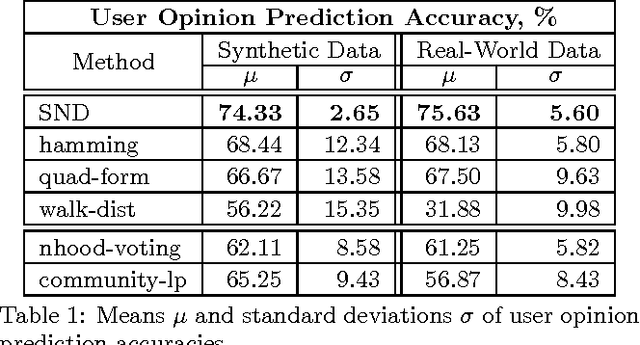A Distance Measure for the Analysis of Polar Opinion Dynamics in Social Networks
Paper and Code
Oct 17, 2015



Analysis of opinion dynamics in social networks plays an important role in today's life. For applications such as predicting users' political preference, it is particularly important to be able to analyze the dynamics of competing opinions. While observing the evolution of polar opinions of a social network's users over time, can we tell when the network "behaved" abnormally? Furthermore, can we predict how the opinions of the users will change in the future? Do opinions evolve according to existing network opinion dynamics models? To answer such questions, it is not sufficient to study individual user behavior, since opinions can spread far beyond users' egonets. We need a method to analyze opinion dynamics of all network users simultaneously and capture the effect of individuals' behavior on the global evolution pattern of the social network. In this work, we introduce Social Network Distance (SND) - a distance measure that quantifies the "cost" of evolution of one snapshot of a social network into another snapshot under various models of polar opinion propagation. SND has a rich semantics of a transportation problem, yet, is computable in time linear in the number of users, which makes SND applicable to the analysis of large-scale online social networks. In our experiments with synthetic and real-world Twitter data, we demonstrate the utility of our distance measure for anomalous event detection. It achieves a true positive rate of 0.83, twice as high as that of alternatives. When employed for opinion prediction in Twitter, our method's accuracy is 75.63%, which is 7.5% higher than that of the next best method. Source Code: https://cs.ucsb.edu/~victor/pub/ucsb/dbl/snd/
 Add to Chrome
Add to Chrome Add to Firefox
Add to Firefox Add to Edge
Add to Edge